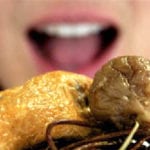 History
History  History
History  Technology
Technology Top 10 Everyday Tech Buzzwords That Hide a Darker Past
 Humans
Humans 10 Everyday Human Behaviors That Are Actually Survival Instincts
 Animals
Animals 10 Animals That Humiliated and Harmed Historical Leaders
 History
History 10 Most Influential Protests in Modern History
 Creepy
Creepy 10 More Representations of Death from Myth, Legend, and Folktale
 Technology
Technology 10 Scientific Breakthroughs of 2025 That’ll Change Everything
 Our World
Our World 10 Ways Icelandic Culture Makes Other Countries Look Boring
 Misconceptions
Misconceptions 10 Common Misconceptions About the Victorian Era
 Mysteries
Mysteries 10 Strange Unexplained Mysteries of 2025
 History
History 10 Things You Didn’t Know About the American National Anthem
 Technology
Technology Top 10 Everyday Tech Buzzwords That Hide a Darker Past
 Humans
Humans 10 Everyday Human Behaviors That Are Actually Survival Instincts
Who's Behind Listverse?

Jamie Frater
Head Editor
Jamie founded Listverse due to an insatiable desire to share fascinating, obscure, and bizarre facts. He has been a guest speaker on numerous national radio and television stations and is a five time published author.
More About Us Animals
Animals 10 Animals That Humiliated and Harmed Historical Leaders
 History
History 10 Most Influential Protests in Modern History
 Creepy
Creepy 10 More Representations of Death from Myth, Legend, and Folktale
 Technology
Technology 10 Scientific Breakthroughs of 2025 That’ll Change Everything
 Our World
Our World 10 Ways Icelandic Culture Makes Other Countries Look Boring
 Misconceptions
Misconceptions 10 Common Misconceptions About the Victorian Era
 Mysteries
Mysteries 10 Strange Unexplained Mysteries of 2025
10 Animals That People Eat Alive
I was always raised to avoid eating lobster, because they’re cooked alive. If they’re dead before cooked, they can be quite dangerous, as the bacteria in them spreads much faster than normal. While some people argue that the way they’re cooked (put in a pot which is slowly brought to boil) means they feel no pain, it’s really a matter of how much trust you put in your chef.
But when the animal you’re about to eat is still alive when you bite into it, that’s a pretty different story altogether. Below are ten examples of animals that are prepared and consumed alive. Be warned—some of the entries can be quite graphic.
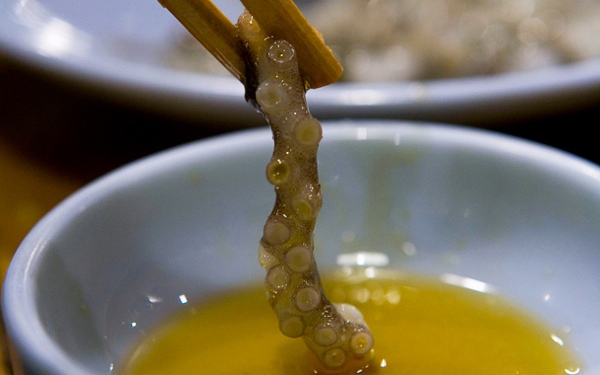
Sannakji is a dish served in Korea, and probably the most well known item on this list through videos that have circulated online. Usually seasoned with sesame seeds and sesame oil, the main component of sannakji is nakji, which is a small octopus. The tentacles are usually cut from the live octopus and brought straight out to the customer, although sometimes it is served whole.
The main “appeal” of this dish is that when chewed, the tentacles are still wriggling. But because of this, the suction cups on the tentacles are still active also, and so they can become stuck in the throat of whoever’s eating it.
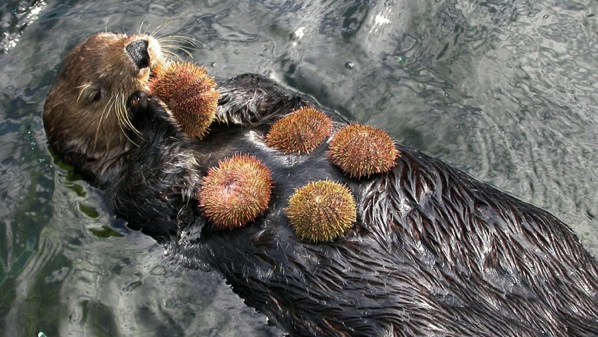
Going into the sea to collect your own sea urchins and eating them straight away has become a popular practice in Italy, where they call them Ricci di Mare. Since the edible part—the roe—is on the inside of the sea urchin, there is a special tool to open them up—though it can also be done with a scissors.
They can be eaten with a spoon, although many people prefer to lick them out with their tongues. But given the extremely spiky nature of sea urchins, you’d want to be careful when ingesting them.
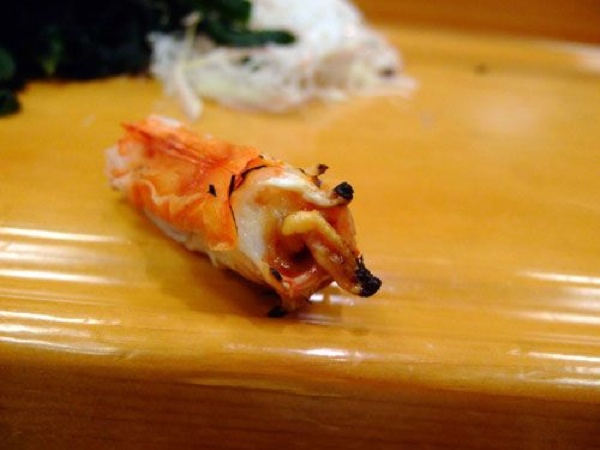
Odori Ebi is a type of sashimi that contains a baby shrimp. The shrimp has its shell removed, and sometimes its head as well. These can be deep fried and served alongside the rest of the shrimp, which is still moving its legs and antennae while being eaten. The shrimp can be dipped in the alcoholic drink sake to intoxicate it and make it easier to eat. It only dies, finally, when being chewed. Odori Ebi is quite expensive to order in a restaurant, because to serve the shrimp alive, it must be prepared quickly and skillfully.
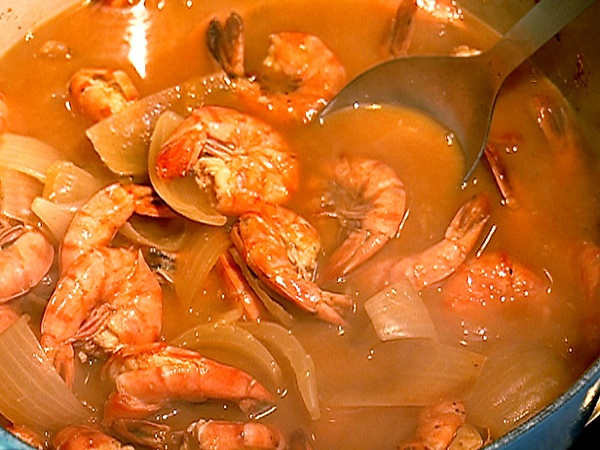
Drunken shrimp is similar to the last entry, but with a few differences. Firstly, it comes from China, not Japan, and is not always served live. But when it is, it is always served in a bowl of Baijiu, a drink with about forty to sixty percent alcohol content.
Another main difference is the size of the portions: this recipe involves full grown shrimp, rather than infants. Furthermore, there would usually be around ten of them served, making this more of a main course as opposed to Odori Ebi, of which many people would eat a single serving.
By far the biggest difference is that the shrimp are far more active. They jump around, trying to escape, and the consumer has to catch it and stuff it in his mouth before it gets away. They can even carry on moving after being swallowed—provided you haven’t chewed them to death. Charming.
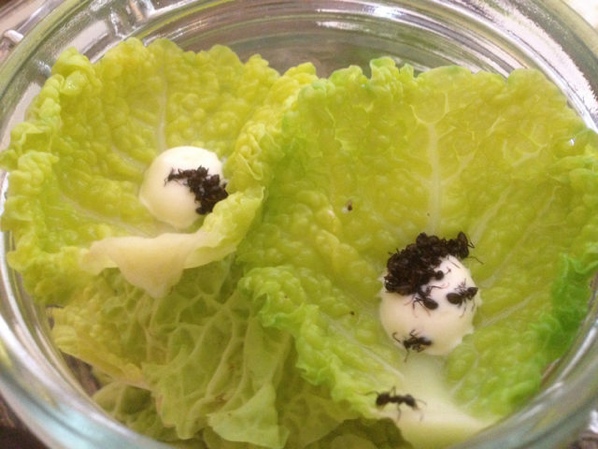
Noma, based primarily in Copenhagen (although it has recently become a pop-up restaurant across the globe) has ranked as the best restaurant in the world for three years now, so it’s not all that surprising to find that they have some innovative ideas.
Unfortunately, one of these ideas is their salad—their ant salad. They serve a salad crawling with ants, which are chilled so that they move slower, and which are supposed to taste like lemongrass. Chilled or not, the fact remains that there are ants crawling all over your lettuce leaves. Plenty of cultures consume insects, true—but not many of these cultures charge over $300 for an insect salad.
If, for some reason, you want to try this, I’d suggest that you simply pour some sugar in the back yard. Much more cost effective.
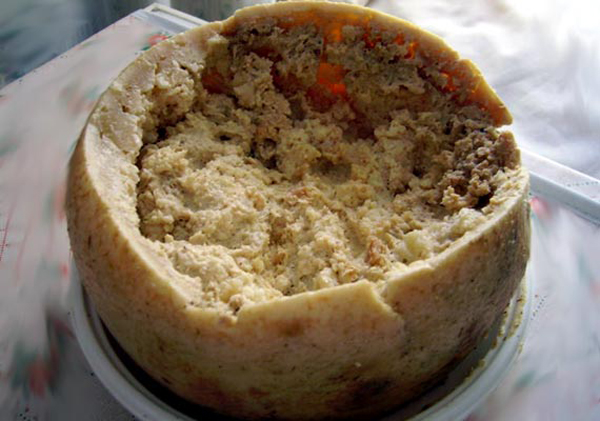
Casu Marzu is a traditional Sardinian cheese made from sheep’s milk. Now obviously milk isn’t an animal, so you must be wondering what this is eaten with. Well the answer is, in my opinion, the most disgusting one so far: maggots.
The cheese is brought to a stage that some consider to be decomposition. Larvae of the cheese fly (Piophila casei) are brought to the cheese to help break down its fat. They eat through the cheese, making it soften, and seep a liquid known as lagrima (teardrop). While some people remove the maggots before consumption, many people consume the cheese maggots and all. When doing so, people are advised to cover their eyes, as the maggots can leap out in an attempt to escape.
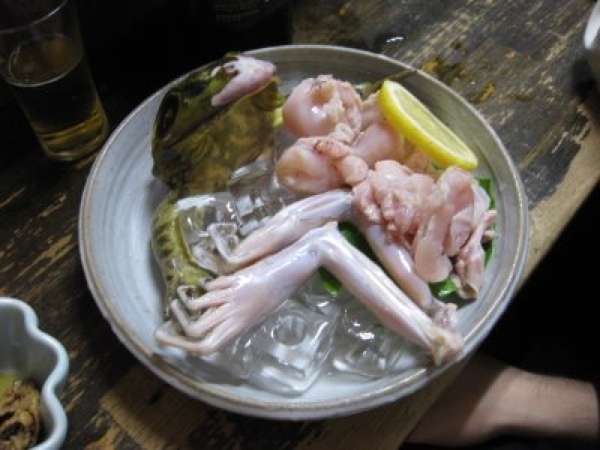
This one is relatively famous, as the video of it being made caused quite a stir last summer. For this dish, a frog is kept in the kitchen until somebody orders the frog sashimi, at which point it is taken out and sliced open on a cold platter. The sashimi bits are taken off, and then the rest of the frog is simmered to make a soup.
Presumably, if you’re ordering this dish you have no qualms about watching a frog be disemboweled alive in front of you and then cooked for your culinary pleasure—but as disturbing as that would be for most people, it doesn’t end there. For the dish contains, of all things, the still-beating heart of the frog. No matter the taste, there is definitely something more than a little demented about that.
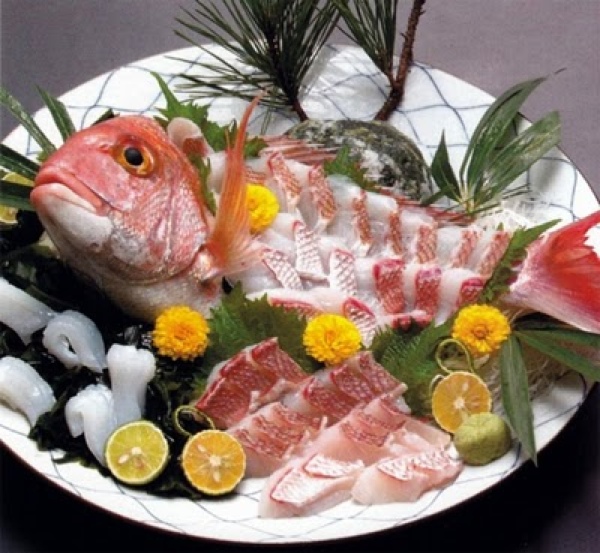
Also a type of sashimi, ikizukuri means “prepared alive”, and is a fish dish. Generally, as with lobster, there is a large tank in the restaurant where patrons can go up and choose the fish they want to eat. That alone is objectionable enough for many people, but ikizukuri goes a lot farther than lobster in the cruelty department.
When the fish is selected, the chef will gut it and serve it almost immediately. What sets it apart from other entries in this list is that the point of ikizukuri is for the chef to slice off a few pieces of fish, but leave the whole thing largely intact. Not only that, but the bits that are cut off are to be done in such a way that the person eating it can see the fish’s heart beating and mouth moving while they eat it.
It’s almost as if this is a secret conspiracy to try and guilt-trip people into becoming vegetarians.
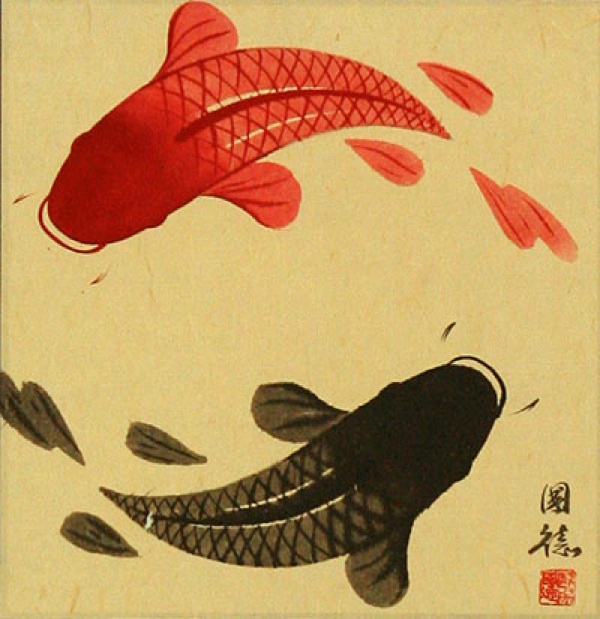
We’re probably all familiar with the concept of ying and yang, which in this case refers to “dead and alive fish”. It is pretty similar to the last dish—with one major difference. While ikizukuri is gutted, chopped up, and served alive, ying yang yu is completely deep fried, except for the still-attached head.
It is served with sweet and sour sauce, with the fish still completely alive and the head still moving. It is prepared extremely quickly, with care not to damage the internal organs, so that the fish can remain alive for a full thirty minutes. The reason these live dishes became so popular was so restaurants could boast about how fresh their food was. In more recent years, this dish has caused a lot of controversy, but it is still quite popular among some people.
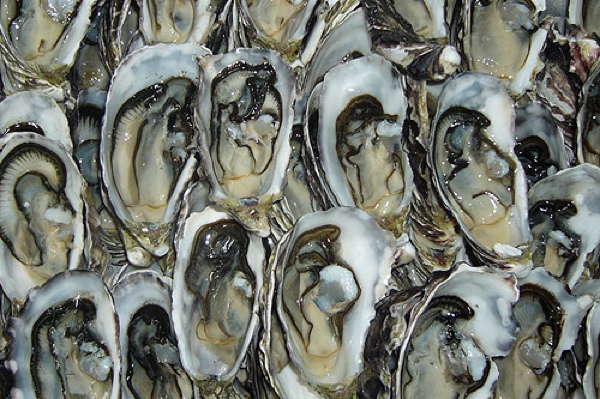
The reason I chose to place this as the number one entry is because it’s a much less extreme way to wind down the list, and also because most people who eat oysters don’t even realize that they’re alive at the time (to be fair, it’s often difficult to tell).
Oysters are generally served live because they deteriorate much faster than most other animals when dead. When their shells are cracked open, they can survive for a significant amount of time. It is only when the flesh is actually separated from the shells that they begin to die; this is why oysters are almost always sucked directly out of their shells. So while this is much less extreme than most of the other entries, it is a lot more common. It is quite likely that many of you will have eaten oysters without knowing this—and it probably won’t be too long until you’re offered them again.
Simon is a twenty-two-year-old university student who likes to adhere to Irish stereotypes, such as drinking and loving the potato. You can follow him on twitter ( @simongireland), or like his extremely long tongue on Facebook to see if he can break the world record.






![Top 10 Disgusting Foods The Chinese Eat [DISTURBING] Top 10 Disgusting Foods The Chinese Eat [DISTURBING]](https://listverse.com/wp-content/uploads/2020/03/23773182-0-image-a-46_1580303417295-150x150.jpg)
